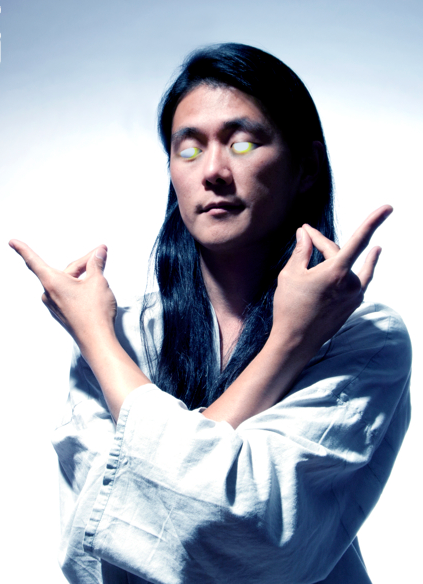Hip-Hop Meets Classical

JooWan Kim
It's hard to say what you might encounter at the typical “hip-hopera.” But if you go to alumnus JooWan Kim's The Great Integration, what you'll witness is a tiny orchestra backing a fiery MC who is rapping a dramatic tale about the end of the world.
Kim's is one of the many imaginative ways that Berklee students, faculty, and alumni are marrying hip-hop and classical music to new and surprising ends. Other innovative takes on the fusion include a composer who seeks to recreate the synthesized and electronic sounds of hip-hop with traditional symphonic instruments and a four-movement composition for orchestra and turntables.
“It just never occurred to me that genres shouldn’t mix freely, ” says composer and professor Stephen Webber, director of Music Technology Innovation and Academic Technology, a new graduate program launching soon on Berklee's campus in Valencia, Spain.
"Stylus Symphony" Movement 4: Dubstep Symbiosis
Most Berklee students know Webber as the guru of turntablism on campus. But he was brought up as a classical pianist, with a strict teacher fond of striking his knuckles with a ruler. He was permitted by his parents to learn guitar and play in a rock band, so long as he kept up his piano studies. Rock and guitar proved to be a gateway to banjo and bluegrass. In college, he majored in jazz. Considering this eclectic background, it’s no wonder he’s created the “Stylus Symphony,” a composition for orchestra and turntables.
Webber sees the fusion of hip-hop and classical as fairly natural. Like hip-hop, classical has a long history of its own version of sampling, borrowing melodies and harmonies from the folk music of the day. The similarity extends further to the “bombastic” nature of both. Webber recalls the sheer decibals of a full orchestra. “There has always been this element of classical music that takes you by the collar and rustles you up and tries to have you go, ‘Wow. What was that?’ Hip-hop has the same desire.”
Student Matthew Pablo agrees about the big, full sound that hip-hop and classical music achieve as part of their unique idioms. He calls it “grandiose” and “produced.” A composer who scores both film and video games, he blends the two often. A movie he’s scoring about krump dance—a spinoff of hip-hop culture—uses a primarily symphonic score.
“Being around such a diverse group of peers at Berklee has inspired me to be involved with other styles of music and experiment with those different styles with my classical compositional background,” says Pablo.
Student Reginald Espiritu has taken the fusion in another direction. His work, “Symphonic Passion,” arranges the acoustic instruments of an orchestra in such a way as to have them create the synthesized sound of hip-hop. Part of his inspiration for this is to lure older and younger people to be part of the same audience. The older generation is there because, technically, it’s an orchestra. The younger crowd is there for the contemporary sound. Both stand to gain through the experience.
"I was exposed to different kinds of music at Berklee. Learning both the contemporary and classical style, technique, and approach in my harmony classes gave me the confidence and inspiration to take on the challenge of fusing contemporary and classical music,” says Espiritu.
As a young man, Joowan Kim, the composer behind the hip-hopera, set out to score films. He says, “Now I think film scoring is very limiting creatively. I’m more inspired by creating something new and original out of nothing. My focus is not trying to make tons of money by scoring for Transformers 15.”
Today, like all these artists, he is driven by the act of creation—by the struggle of making art—and by the innovation and musical possibilities inherent in that pursuit.
